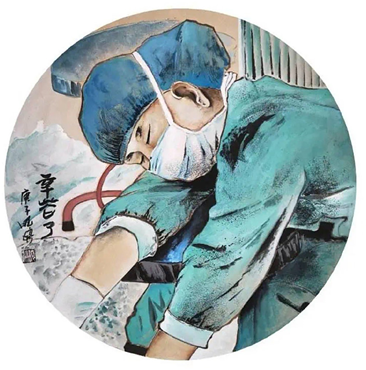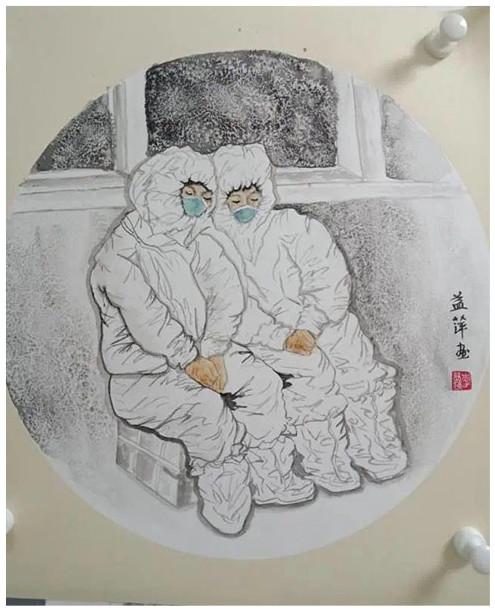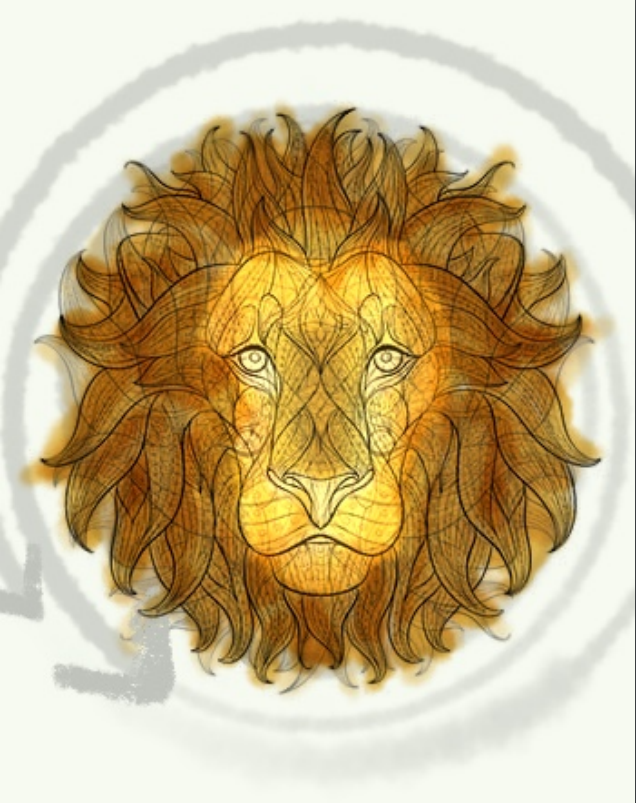Strength of a Project
Mental Health and Resilience
The Covid-19 pandemic has become a test for everyone, regardless of social status or place of work. Life has completely changed, and I had to quickly get used to new rules and norms to protect myself and my loved ones from the terrible virus. However, the most crucial role in this process is played by medical workers who risk their lives, their health, and the health of their relatives and friends to save the patient’s life. Medical workers’ mental health and resilience have become a symbol of indomitability and inspiration to move forward during the pandemic.

In the first piece of art I chose, a nurse fell asleep from exhaustion in her uniform and most likely at her workplace. It shows incredible dedication and willingness to bear the responsibility imposed on her by the conditions of the pandemic. Despite the difficulties they had to go through, medical workers act professionally and nobly, sacrificing their time and health.

The second drawing I chose is similar to the previous one regarding theme and idea. You can also see medical workers who have fallen asleep from exhaustion. They faithfully perform their work and realize their vocation to save people’s lives. An exciting feature of this art is the presence of exactly such a uniform in which they are dressed. Baggy white suits covering the whole body are intended for work in emergencies and complicated cases. Thus, one can assume that these medical workers performed their duty among already infected or seriously ill patients. It is essential to appreciate the work of medical workers because it is difficult to imagine the level of physical and psychological fatigue they must overcome. The medical workers resilience in the face of Covid-19 became a significant art theme of that period and will be covered in many more.
Doctors who work on the front lines become victims of emotional and physical overload. Risk factors include solid emotional tension, lack of sufficient conditions for recovery, and insufficient psychological support in the practice of the health care system, which adversely affects medical workers. One of the essential qualities of a medical worker is emotional stability. And if the medical worker cannot overcome the load, it will interfere with the regular activity of the specialist. The consequences can be catastrophic, as the slightest mistake in the work of a medical worker can be fatal. It should also not be forgotten that the medical worker himself can be seriously affected psychologically, emotionally, or physically. The Covid-19 pandemic did not break, but on the contrary, it united everyone around a common problem. Medical workers in this paradigm took on a lot of work and showed resilience under challenging conditions.
Part 1: Work Itself
My work of art is also related to the theme of resilience in the face of Covid-19. The lion symbolizes the strength and self-confidence I gained during this difficult period. A lot of lines mean a lot of small challenges that had to be dealt with every day without losing stability. He looks straight ahead, like all of us, ready for anything. As for the challenges, at first it was difficult for me to tune into the assignment but when I started drawing, I began to understand the focus of my work. A little later, I realized that the lion is the most accurate personification of inner strength, as far as I am concerned. Speaking about the color scheme, I wondered whether to make it monochromatic or naturalistic

During this task, I, to my surprise, relaxed and rested as much as possible. Creative tasks are my favorite from the whole study. Also, I looked for the right image in my mind, discovering interesting associations in my thoughts. Thanks to this task, I realized how strong we all are and can withstand more than we think. At the same time, we are vulnerable, like paints on a canvas. Because no matter how intense the image is, one drop of the wrong shade can ruin everything.
Self-Reflection
During the course, I enjoyed studying the topics of art in therapy and art as therapy the most because it resonates most closely with what I am interested in doing in the future. Moreover, learning about the cycle of food and alcohol addiction was quite informative, and I enjoyed it as well. Finally, the topic of sexually transmitted diseases seemed unethical to me at first. Still, I immediately understood the importance of learning about this topic, and in the end, it was interesting. Talking about sexually transmitted diseases, the biggest surprise was the pieces of art devoted to it. Before, I would not have thought there were so many thematically related booklets, pictures, and even a holiday. However, the topic of various addictions was the most informative and my knowledge about it grew the most. It was fascinating to read about the stories of people who have dealt with addictions and how they fought or failed to fight them. While studying art in therapy, I learned a lot about how a person can subconsciously bring themselves to a state of healing through analyzing art. Art as therapy resonates more with my vision of art therapy in general. I learned how important the minor line or point made in the process could be. The most exciting thing was that I read a lot about it and practiced it.
Works Cited
Feng, Xiaodan. “Curating and Exhibiting for the Pandemic: Participatory Virtual Art Practices During the COVID-19 Outbreak in China.” Social Media+ Society, vol. 6, no. 3, 2020.
Malboeuf-Hurtubise, Catherine, et al. “Online Art Therapy in Elementary Schools During COVID-19: Results from a Randomized Cluster Pilot and Feasibility Study and Impact on Mental Health.” Child and Adolescent Psychiatry and Mental Health, vol. 15, no. 1, 2021, pp. 1-11.
Potash, Jordan S., et al. “Art Therapy in Pandemics: Lessons for COVID-19.” Art Therapy, vol. 37, no. 2, 2020, pp. 105-107.
Mak, Hei Wan, Meg Fluharty, and Daisy Fancourt. “Predictors and Impact of Arts Engagement During the COVID-19 Pandemic: Analyses of Data from 19,384 Adults in the COVID-19 Social Study.” Frontiers in Psychology, vol. 12, 2021.